Voyage of the Starlight Explorer reading Exercise
Travel with the Aurora Science Club aboard a research vessel as they investigate marine bioluminescence, analyze ocean data, and discover how collaboration powers curiosity.
Exercise Guide
How to complete:
Read each passage in order—the investigation unfolds from launch to presentation. Take notes on hypotheses, observations, instruments, and conclusions. After every passage, answer the questions by pointing to the evidence in the text.
Success tips:
These passages blend storytelling with scientific process. Pay attention to the sequence: problem, method, data, and interpretation.
- Highlight vocabulary about marine biology, engineering tools, and data analysis.
- Track cause-and-effect relationships between observations and decisions.
- Compare how different team members contribute their expertise.
- Notice measurements (temperature, photon counts, coordinates) that support conclusions.
- Summarize each section to keep the investigation timeline clear.
Knowledge:
You will encounter concepts such as bioluminescence, remotely operated vehicles (ROVs), spectroscopy, microplastics, and data visualization. The passages reinforce informational reading skills—identifying main ideas, interpreting technical language, and evaluating scientific conclusions.
Complete the Exercise
Reading Passage 1
The Starlight Explorer, a research vessel converted from an old icebreaker, rocked gently as twelve students from the Aurora Science Club stepped aboard. Their mentor, Dr. Amina Chen, briefed them on the mission: to document a rare bloom of bioluminescent plankton spotted by satellites across the Crescent Current. Each student would keep both a narrative journal and a scientific data log.
During orientation, engineer Mateo demonstrated the ship’s remotely operated vehicle (ROV), equipped with high-sensitivity cameras and fluorometers. Biologist Priya handed out laminated field guides illustrating dinoflagellate species and their light-emitting patterns. The students practiced safety drills, labeled sample jars, and calibrated handheld spectrometers before the ship left harbor beneath a cobalt dusk.
As shoreline lights faded, Dr. Chen gathered everyone in the observation lounge. “A good scientist records what they expect and what actually happens,” she reminded them. Lila, the club’s statistician, drafted a table predicting brightness levels based on satellite data, while audiophile Jonah configured underwater microphones to capture acoustic signatures of the bloom. The mission clock started at 1900 hours.
What is the primary objective of the mission?
Review the first paragraph for the stated goal.
Which tools are introduced during orientation?
Look at the second paragraph for equipment details.
What documentation strategy does Dr. Chen emphasize?
Refer to the third paragraph for her advice.
What task does Lila handle before the mission clock starts?
Check the third paragraph for her role.
Why does Jonah set up underwater microphones?
Return to the third paragraph.
Reading Passage 2
On the second night, the Starlight Explorer reached coordinates where satellite imagery showed the brightest glow. The students launched the ROV from the moon pool, guiding it through black water streaked with electric blue flashes. Mateo monitored the live feed as fluorometers registered spikes in photon counts, while Priya narrated her observations into the mission log.
Midway through the dive, the ROV cameras captured a swarm of dinoflagellates swirling around a drifting kelp frond. The onboard AI flagged irregular pulses in the light patterns, recommending a closer pass. Lila compared the photon spike to her prediction table and saw readings twenty percent higher than expected, prompting her to signal the deck crew to ready sampling nets.
When the ROV surfaced, the students collected water samples and transferred glowing plankton into scintillation vials. Jonah recorded synchronized audio of snapping shrimp and the faint crackle of the bloom. Dr. Chen reminded them to add seawater temperature, salinity, and GPS coordinates to each label so every observation could be linked to its environment.
How do the students measure the bloom’s intensity?
Review the first paragraph for instrumentation.
What unexpected result does Lila observe?
Check the second paragraph for her analysis.
Why does Dr. Chen insist on labeling environmental data?
Refer to the third paragraph.
What sounds does Jonah capture during sampling?
Look to the third paragraph.
How do the students respond to the AI’s alert?
Return to the second paragraph.
Reading Passage 3
By the third day, the lab tables on board were covered with glowing samples, data sheets, and humming laptops. Lila graphed photon counts against temperature, revealing that cooler water produced stronger luminescence. Jonah overlaid sound spectrograms with the timeline of the bloom, spotting rhythmic peaks whenever the ship crossed eddies rich in plankton.
Priya and Mateo compared microscopic images from the ROV with samples under the onboard microscope. They discovered clusters of dinoflagellates attached to microplastics, shining brighter than free-floating specimens. Dr. Chen cautioned them: “Correlation isn’t causation—design an experiment to test whether plastic triggers these flashes or simply traps the plankton.”
The students split into two teams. Team Alpha prepared seawater tanks, adding sterilized microplastic beads to some and leaving others clean. Team Beta measured dissolved oxygen and nutrient levels hourly, charting changes in each tank. Late that night, they found the microplastic tanks glowed longer but also displayed elevated stress markers, inspiring the club to draft follow-up research proposals.
What relationship does Lila identify in the dataset?
See the first paragraph for her analysis.
What surprising observation do Priya and Mateo make?
Review the second paragraph.
What experiment does Team Alpha design?
Look at the third paragraph for methodology.
Which variables does Team Beta monitor?
See the third paragraph for their measurements.
What conclusion do the students draw from the tank data?
Interpret the final sentences of the third paragraph.
Reading Passage 4
On the final evening, the students gathered on deck to summarize their findings. Lila projected graphs linking luminescence to temperature and highlighted the microplastic anomaly for further study. Jonah played audio clips alongside spectrograms, revealing rhythmic patterns produced near eddies rich in plankton.
Dr. Chen guided them in drafting a presentation for the Coastal Science Symposium. The team proposed continued monitoring of microplastics in bloom regions and suggested partnering with local fishermen to reduce plastic waste. Priya added that educating coastal communities about minimizing night-time light pollution could help researchers observe natural glows without interference.
As the Starlight Explorer sailed back toward harbor, the students wrote reflective journal entries. They noted how data and predictions sometimes diverged, how controlled experiments sharpened their understanding, and how unanswered questions fueled their curiosity. The mission ended at dawn, but their enthusiasm glowed brighter than the midnight sea.
How do the students present their data to one another?
Review the first paragraph of this section.
What recommendation do they make regarding microplastics?
See the second paragraph.
Why does Priya mention light pollution?
Look again at the second paragraph.
What reflections do the students record in their journals?
Refer to the third paragraph.
What overall tone concludes the mission?
Interpret the final sentence of the passage.
Share this exercise
Help others learn reading by sharing this exercise
Related Exercises
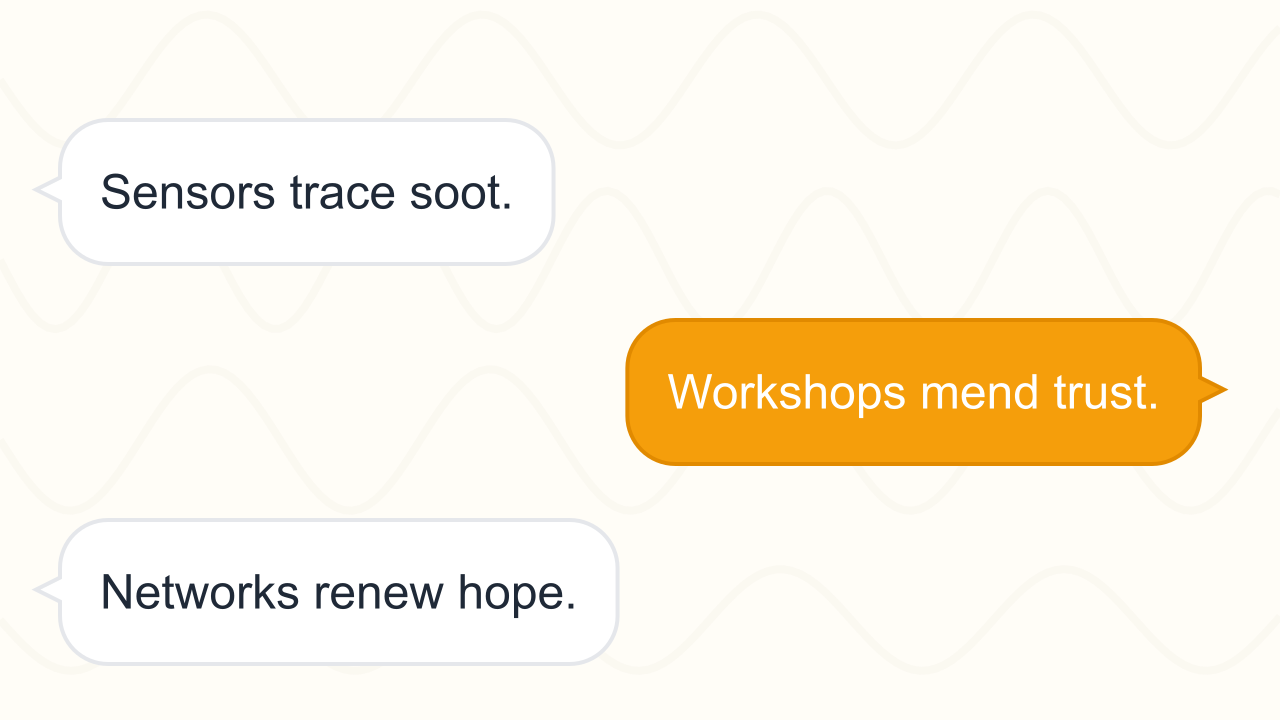
Designing Regenerative Networks for Future Neighborhoods
Trace how innovators, residents, and policymakers build interconnected solutions that cut pollution, expand recycling, and redesign everyday systems across six detailed case studies.
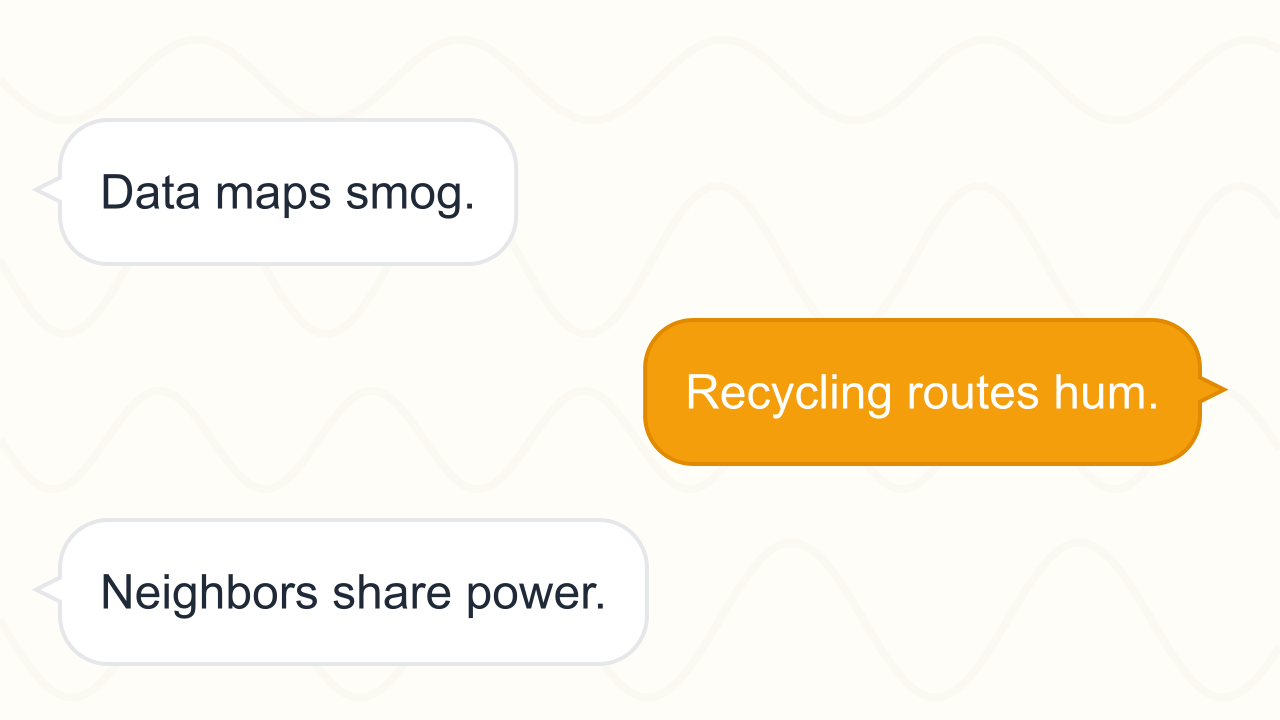
Clean Cycles for Tomorrow
Discover how neighborhoods reinvent waste systems, deploy new materials, and empower residents to shrink pollution footprints while expanding recycling access.
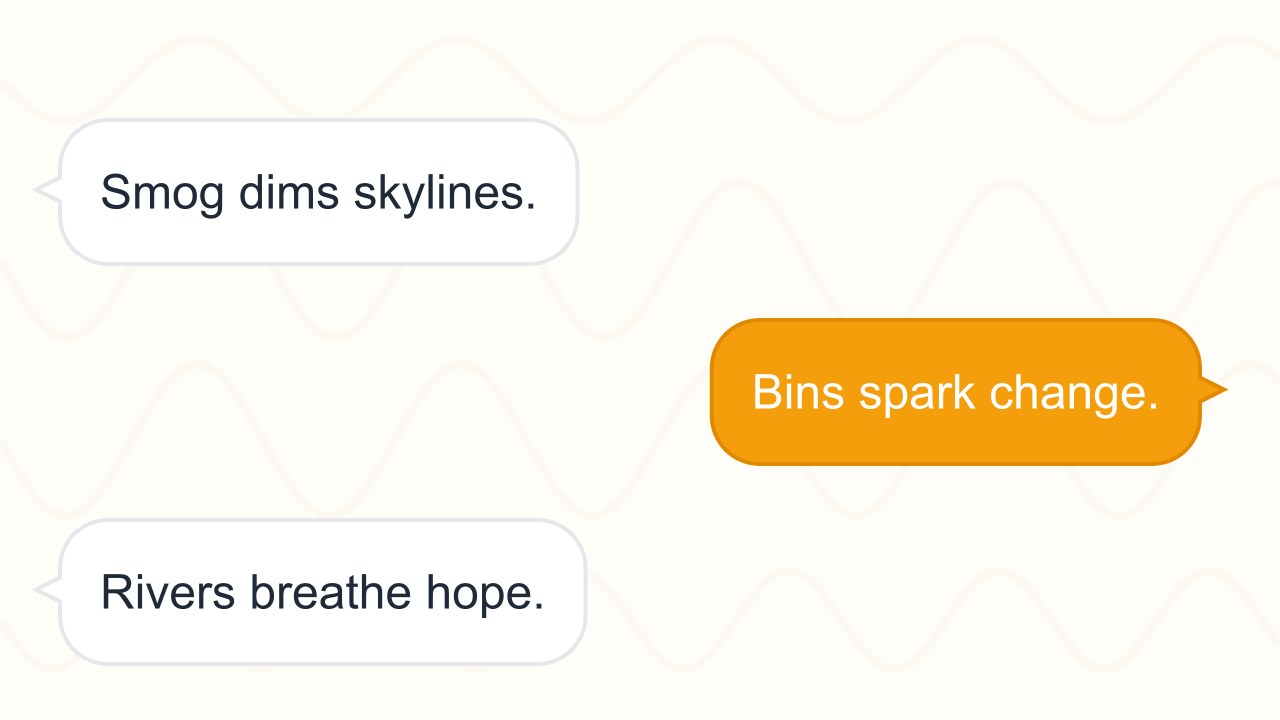
Pollution and Recycling: Restoring Our Cities
Explore how air, water, and waste pollution affect urban life, and examine the recycling innovations and community actions working to clean cities around the world.
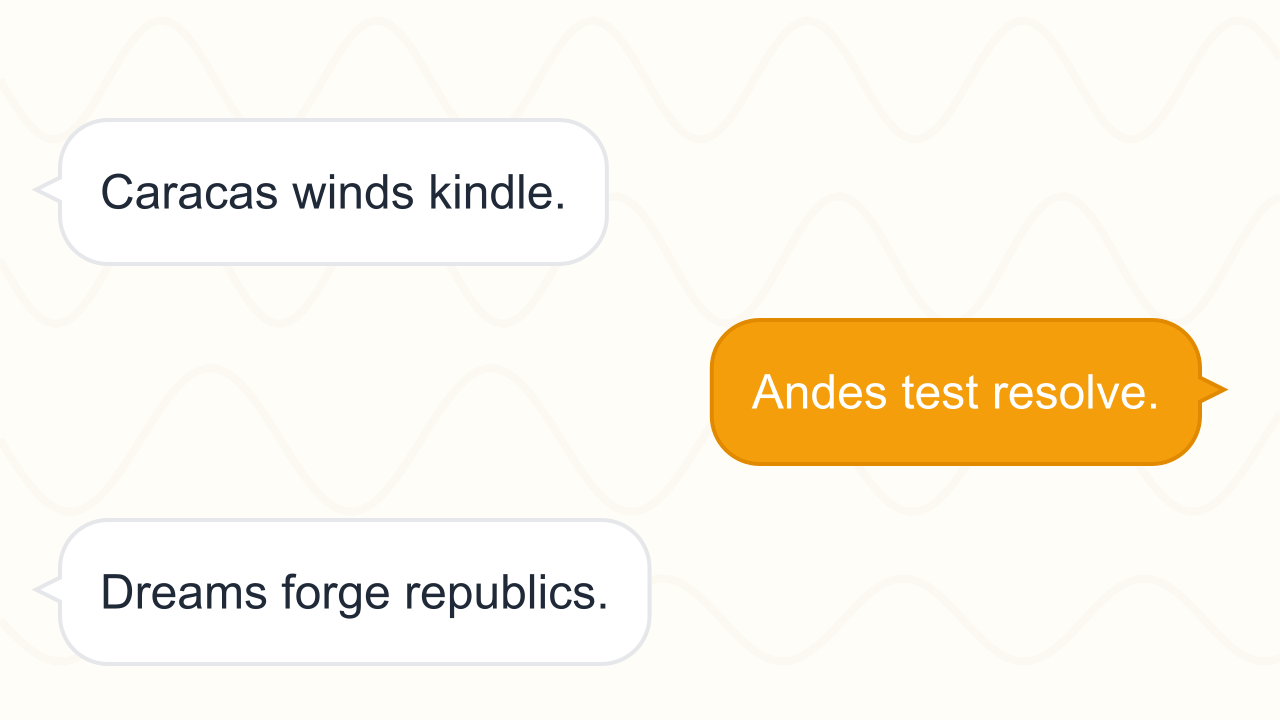
Simón Bolívar: Liberator of the Andes
Journey with Simón Bolívar from his Caracas youth through daring Andean campaigns and the struggle to define lasting republics across northern South America.
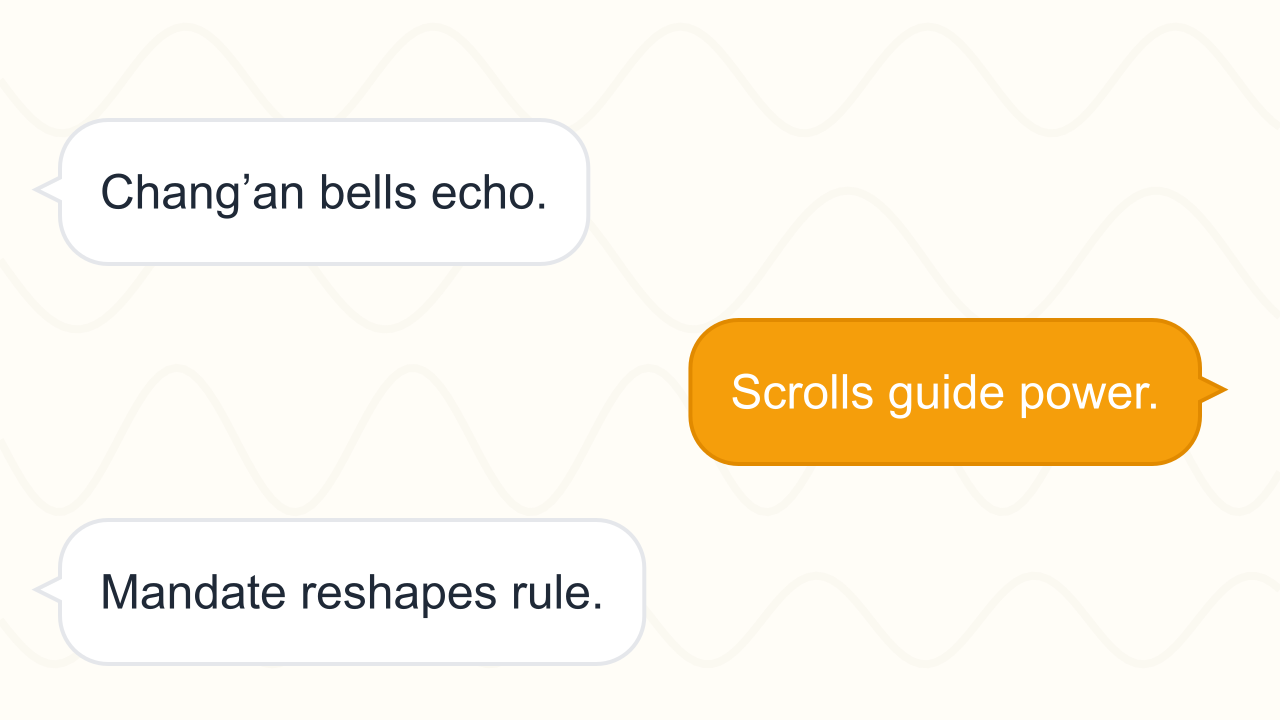
Wu Zetian: Mandate of the Tang
Follow Wu Zetian’s ascent from a palace attendant to emperor of the Zhou dynasty, examining how she wielded scholarship, alliances, and reform to shape eighth-century China.